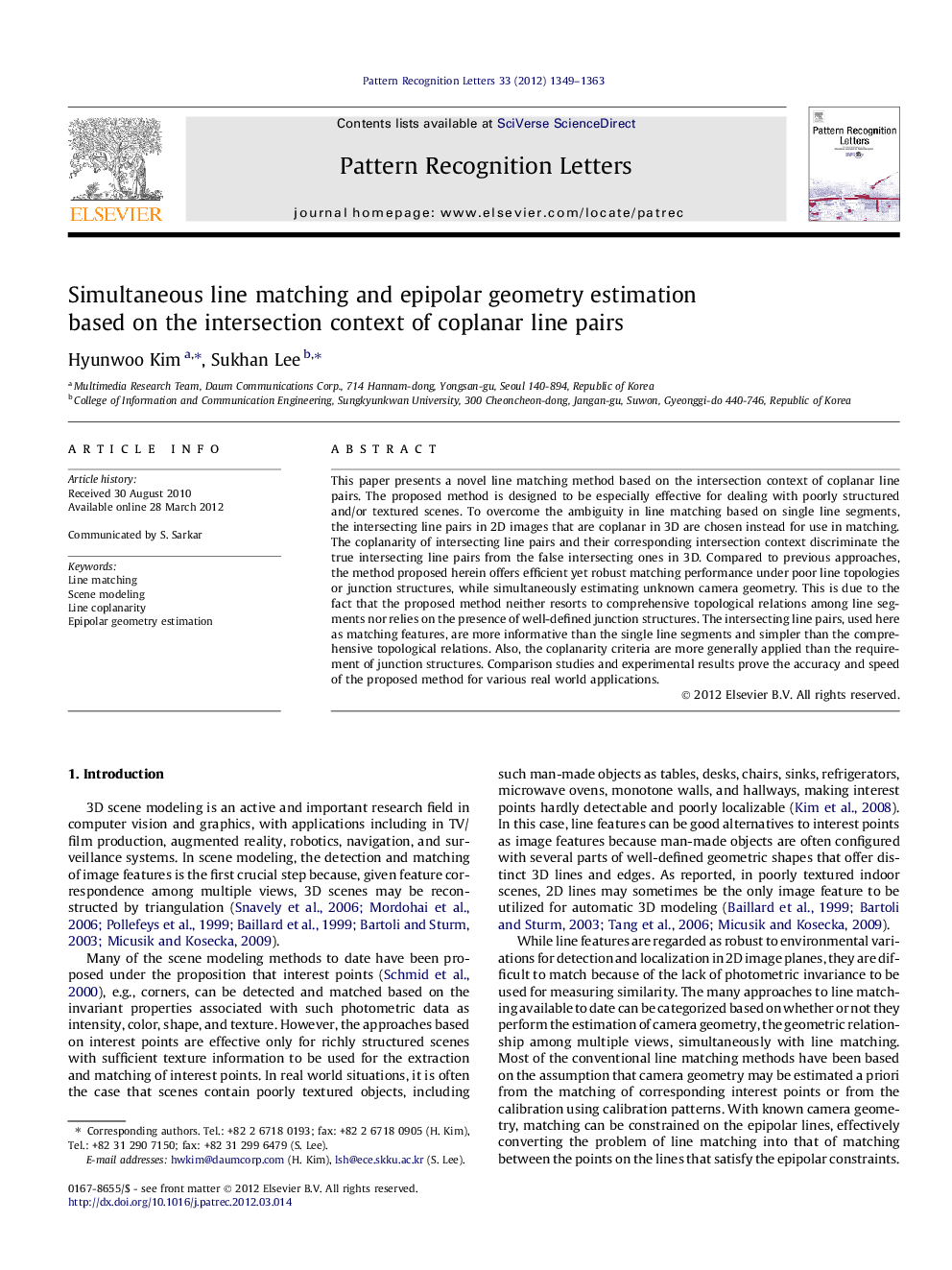| Article ID | Journal | Published Year | Pages | File Type |
|---|---|---|---|---|
| 536480 | Pattern Recognition Letters | 2012 | 15 Pages |
This paper presents a novel line matching method based on the intersection context of coplanar line pairs. The proposed method is designed to be especially effective for dealing with poorly structured and/or textured scenes. To overcome the ambiguity in line matching based on single line segments, the intersecting line pairs in 2D images that are coplanar in 3D are chosen instead for use in matching. The coplanarity of intersecting line pairs and their corresponding intersection context discriminate the true intersecting line pairs from the false intersecting ones in 3D. Compared to previous approaches, the method proposed herein offers efficient yet robust matching performance under poor line topologies or junction structures, while simultaneously estimating unknown camera geometry. This is due to the fact that the proposed method neither resorts to comprehensive topological relations among line segments nor relies on the presence of well-defined junction structures. The intersecting line pairs, used here as matching features, are more informative than the single line segments and simpler than the comprehensive topological relations. Also, the coplanarity criteria are more generally applied than the requirement of junction structures. Comparison studies and experimental results prove the accuracy and speed of the proposed method for various real world applications.
► Line-based scene modeling working in poorly textured indoor scenes. ► The intersection of line pairs is newly modeled as an image feature. ► Automatic line matching without predetermined camera geometry. ► A practical and fast solution for robotic applications.
